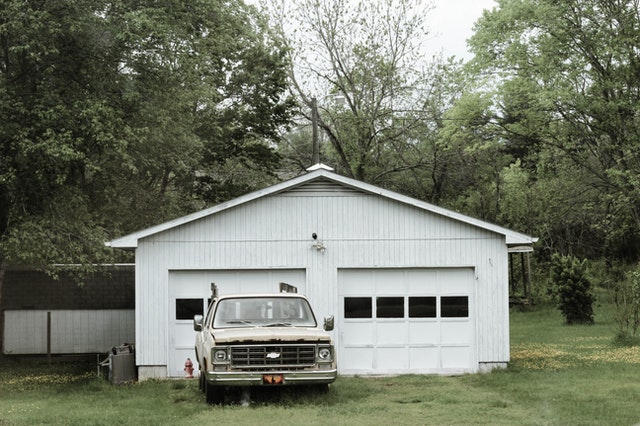The concrete floors in your garage may be the next project to add to your DIY list. You can remodel the form of your automotive spaces by enhancing its flooring first. Adding dimension to it with 3D walls and floors will repurpose its function.
A garage is where you can enhance your creativity. You just need to make it a comfortable workspace. One that could discourage you is that the garage looked too gory for you to be inspired. The past days got you trapped inside your homes. Having no time to move the cars out made the floors hidden from your sight.
As time goes by, it had gathered dirt and mess. You need a way to restore its look and recover your drive for productivity.
Chin up and fret no more. Here is your ultimate guide on how to restore and seal that old garage floor.
The Basics
1- Preparation
The first thing that should always be considered is preparation. Old slabs that have been neglected for a long time will chip and crack. The pitted garage floor may seem hopeless to restore.
But first, have the floors checked and clean thoroughly. Here is how to do it.
STEP 1: Clear the floor. Get the floors emptied of its contents. Move the equipment and tool cabinets. This time, park your cars outside for a while. See, what a breath of fresh air! Now the garage floor is in full view. Mop it, then make sure that before you apply a garage sealer Seattle, it should be dry. In this first step, make sure that the floors are out of any moisture.
STEP 2: Filling the pit. Once you see the floor’s full condition, you’ll see that there are different existing damages. Before you apply a garage floor sealer, the pits on the surface disappear with a quick-set concrete mix. The key to this step is to get the right consistency of the concrete mix.
STEP 3: Polish for sealing. After you filled the pits and cracks with concrete mixture, trowel down the surface to make it smooth and even. Now it’s ready for sealing.
2- Sealing for Restoring
There are various resurfacing materials for the worn-out slabs. Depending on the damage that needs to be fixed, you have an option to use a crack concrete sealer, acrylic sealer, or epoxy coating. Choices are available to suit your needs. Here are the in-demand choices for garage sealants.
- Epoxy Coating
- Acrylic Coating
- 2-Part Coating (Polyaspartic Coatings)
A sealant covers up the gory look on your old garage floor. It can recover from any flaws. One option is for you to create a brand new look for it with epoxy coating.
Epoxy creates an excellent top layer sealant. It is the resinous material that has a thermo-setting or self-leveling property. It evens out o the surface that it can cover hard to reach spots on the floor.
An acrylic sealer can also coat the top of the polished floor. Or have it mixed with other concrete sealers. An acrylic coating can enhance the glossy look of existing floors.
Coating the garage floor can be as easy as a 1-day install process. Yes. You can restore a gory garage into a bright, vibrant space! A high-performance flooring is a quick fix. Today, polyaspartic floors are rising in popularity. These are in-demand because they can cure in just one day. So if you don’t want to put much effort into revamping a garage space, use this option.
3- Other Garage Floor Materials
You can have minimal flaws on your garage floors. It can be minor abrasions that do not require sealing.
Other materials can be your options, too. Here are some popular garage flooring options for you.
- Paint
Garage paints are easy and affordable material to restore the floors. If you need something that can be customized, paints are great tools. Some paints are fortified with epoxy or acrylic so that you can benefit from stronger, durable materials. The issue with paint is that it wears out quickly and needs constant maintenance.
- Rubber Tiles
Rubber tiles or mats are easy to install materials that can cover up the garage floor. This is suitable for your use if you need protective layers on the floors. These materials are also easy to clean. Pull it off from the surface, wash, then roll them again, and voila! Your garage floor is good to go, ready for action.
- Linoleum Mats, Vinyl Coating.
Linoleum and vinyl materials are suitable protective coatings to cover the garage floors. They have excellent adhesive quality on a concrete surface. It suits a garage floor that always gets into action. They are also easy to clean, light to use, and accessible.
4- Clear Coating
When using a garage concrete sealer, applying a clear coating is not necessary. But this step ensures a high-performing flooring that restores the quality of the floor and repels future damages.
Even if you have bare concrete, the surface will look glossy and sturdy. A clear coating protects the concrete from further scratches, and it also keeps satins away.
A popular clear coat is the rust-oleum epoxy shield. Garage flooring experts always recommend having a garage epoxy floor kit. The rust-oleum coat helps the slabs get protection from moisture. This is suitable if you want to add a second layer of coating for the best results.
Having concrete floors, especially in garages, helps you maximize the space’s function. Get a good plan for how you can revamp the floors. Restoration is better than costly replacement.




